What is the Electronic Components Industry: Ultimate Guide
July 22,2025
Introduction: The electronic components industry is the backbone of our modern digital world, encompassing all the small parts that make today’s electronic devices possible. From the microchips in your smartphone to the RF cables connecting communication towers, this industry produces a vast range of components that drive innovation. In simple terms, the electronic components industry covers the manufacturing, distribution, and innovation of the tiny electronic parts – like semiconductors, resistors, connectors, and more – that go into every electronic gadget or system. It’s a massive global sector, critical to consumer electronics, telecommunications, automotive systems, aerospace, and virtually every high-tech field.
The importance of this industry cannot be overstated. Virtually every electronic item we use is built from dozens or even thousands of individual components working together. The companies in this space range from semiconductor giants to niche manufacturers of specialty connectors. In this ultimate guide, we’ll break down what the electronic components industry is, how it’s categorized, how big it is, and answer common questions about how it relates to the broader electronics and electrical sectors. We’ll also spotlight specific segments – for example, radio frequency (RF) components like adapter cables – to illustrate the industry’s scope and significance. By the end, you’ll have a comprehensive understanding of the electronic components industry and its role in our technological landscape.
What is the Electronic Components Industry?
The electronic components industry refers to the sector of business devoted to making and selling the basic parts that go into electronic devices and systems. An electronic component is any small electrical device or element that plays a role in an electronic circuit (for example, a resistor, transistor, capacitor, microchip, plug, or cable). The industry covers all these building blocks, from simple passive components (like capacitors that store charge) to complex active components (like integrated circuits that compute and process information). In essence, if you imagine an electronic gadget as a Lego structure, the electronic components industry produces the individual Lego bricks.
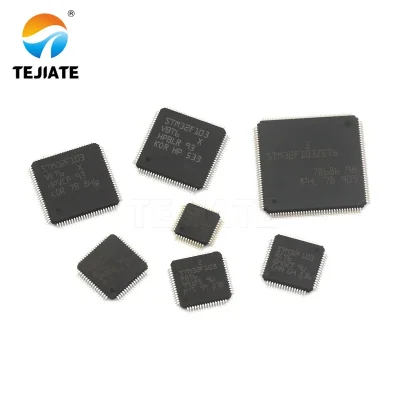



To understand the scope, it helps to know the major categories of electronic components that this industry produces:
- Passive components: These do not require external power to operate (aside from the circuit’s flow). They include things like resistors (which limit current), capacitors (which store electrical energy), and inductors (coils that store energy in a magnetic field). Passive components are fundamental for controlling electrical signals in circuits.
- Active components: These are components that rely on an external power source and can amplify or control signals. The most prominent are semiconductors, such as integrated circuits (ICs) (chips), transistors, diodes, and microprocessors. Active components are the brains of modern electronics – they perform computations, signal processing, and power regulation.
- Electromechanical components: These are parts that involve an electrical signal to create a mechanical movement or vice versa. Examples include switches, relays, motors, and importantly, connectors and cables. Connectors (like plugs, sockets, and cable assemblies) physically link electronic systems together. They might not be as glamorous as microchips, but without reliable connectors, nothing would interface properly.
- Other components and materials: This includes printed circuit boards (PCBs) which physically support and wire components together, sensors that detect environmental inputs, displays (like LCD/OLED panels), and power supply units and batteries. These might be considered sub-sectors on their own but are often part of the broader electronic components supply chain.
Each of these segments involves specialized knowledge, manufacturing processes, and companies. For instance, passive parts like resistors and capacitors are often mass-produced in huge quantities, whereas active components like advanced microchips come from high-tech semiconductor fabs. Electromechanical parts like connectors and cables require precision engineering to ensure reliability especially in demanding applications (such as aerospace or 5G communications).
One example of a niche within the electromechanical segment is the RF (radio frequency) components sub-industry, which focuses on parts used for high-frequency signal transmission. RF components include things like coaxial connectors, antennas, and adapter cables that connect different types of RF connectors. For instance, companies like TEJTE – an ISO-certified manufacturer of RF components – produce a full range of RF adapter cables (from SMA connectors to BNC, U.FL to SMP, MMCX, and more) to help link devices in wireless communication systems. These RF adapters and cables are critical in telecommunications, radar, and IoT devices, ensuring that high-frequency signals can travel with minimal loss. This illustrates how diverse the electronic components industry is: it spans from nanometer-scale silicon chips all the way to rugged coaxial cables, all serving the broader purpose of enabling electronic devices to function and connect.
In summary, the electronic components industry is the foundation of all electronics. Whenever a new smartphone is released or a spacecraft is launched, it’s the result of countless components – tiny and large – all produced by this industry and assembled to work in unison. Now that we know what the industry includes, let’s explore how it fits into the larger picture of industries and just how large and significant it has become.
Which industry do electronic items come under?
Electronic items – such as phones, computers, appliances, or any consumer gadget – generally fall under the electronics industry, which is part of the broader technology and manufacturing sector. In other words, when we talk about “electronic items,” we’re usually referring to products of the electronics manufacturing industry (also known as the electronics and information technology sector). This includes consumer electronics (like smartphones and TVs), industrial and medical electronics, automotive electronics, and so on. All these electronic items are built using the components from the electronic components industry, but the finished products belong to the electronics manufacturing industry (the sector that assembles components into final devices).
To put it simply, electronic items come under the electronics industry, which itself is typically categorized under the high-tech manufacturing domain. For example, a microwave oven or a laptop would be considered a product of the electronics industry (specifically consumer electronics), which is a subset of manufacturing. Within industrial classifications, electronic manufacturing often has its own category (for instance, in NAICS – North American Industry Classification System – consumer electronics manufacturing is a distinct industry group). Electronic items are also part of the broader electrical and electronics sector, which sometimes is spoken of in one breath because of the close relationship between electrical equipment and electronic devices.
It’s worth noting that when people ask this question, they might be clarifying the difference between industries that handle “electronics” versus other categories. Electronic products are not usually considered part of, say, the “electrical power industry” (which deals with electricity generation/distribution). Instead, they come under electronics manufacturing/technology industry. This industry encompasses companies like Apple, Samsung (consumer devices), as well as industrial electronics firms like Siemens or General Electric’s electronics division – all of which deliver end-user electronic products built from those fundamental components.
In summary, if you have an electronic item in hand, the industry responsible for it is the electronics industry, which sits under the larger umbrella of manufacturing and tech. And supporting that is the electronic components industry providing all the necessary parts.
How big is the electronic components market?
The electronic components market is huge and still growing, reflecting how our world is increasingly filled with electronic devices. In terms of numbers, the global market size for electronic components is measured in the hundreds of billions of dollars per year. According to market research data, the general electronic components market worldwide was about $498 billion in 2024, and it expanded to roughly $541 billion in 2025. That represents a healthy annual growth rate of around 8.7%, which is quite robust for an industry of this size. Looking forward, forecasts suggest it will continue growing at a strong pace – for instance, projected to reach over $735 billion by 2029 if current trends hold.
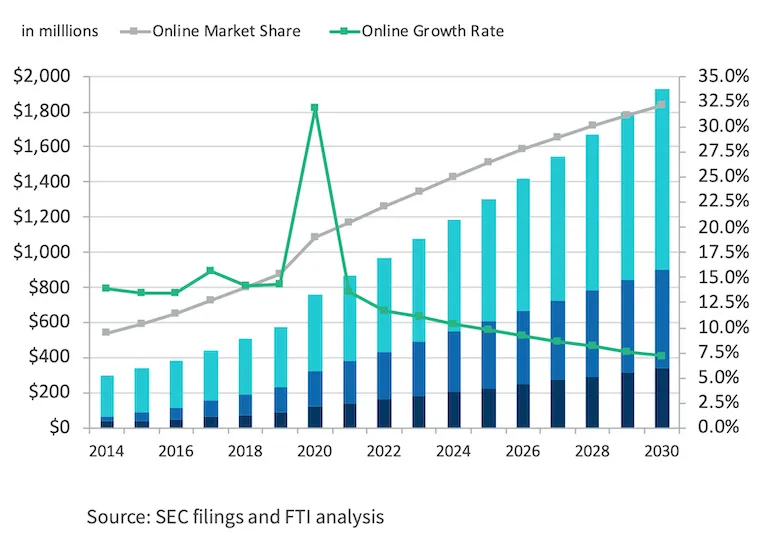
This scale makes the electronic components industry one of the largest sub-sectors of the technology world. For context, it’s on par with or larger than the GDP of many countries. Several factors drive this growth. One is the proliferation of devices – consider how many more smart gadgets, sensors, and vehicles are electronic now compared to a decade ago. Each new smartphone model release, each new electric car or IoT appliance, adds to the demand for components (from chips to capacitors to connectors). Another driver is the rise of emerging technologies: for example, the Internet of Things (IoT) and Industrial IoT are expected to connect tens of billions of devices in the coming years, each packed with sensors and wireless modules. (In fact, IoT connections are estimated to hit 25 billion by 2025, up from 12 billion in 2019, which implies a massive need for various electronic components to enable those connections.) Similarly, the rollout of 5G networks, growth in cloud computing infrastructure, and even advancements in healthcare electronics all fuel the components market.
Global electronic components market size over time. The industry was valued around $211 billion in 2024 and is forecasted to grow to over $370 billion by 2033 at ~6.5% CAGR in one projection. Other estimates that include a broader definition put the 2024 market closer to $500 billion. Despite variations in estimates, all sources agree on a strong growth trajectory as demand for components rises worldwide.
Geographically, the Asia-Pacific region dominates the electronic components market. Countries like China, South Korea, Japan, and Taiwan are major producers (and consumers) of components. In fact, Asia-Pacific accounted for a significant share of the market due to its large manufacturing base and technical infrastructure. China in particular leads in manufacturing many electronic components and is home to many of the world’s largest electronics factories. North America and Europe are also key players, especially for high-end components and as end markets, but many companies there rely on Asian suppliers for production. The market isn’t just big – it’s global and interlinked, meaning a supply chain disruption in one country (like a factory shutdown or a logistics issue) can have worldwide ripple effects, as seen during recent component shortages.
It’s also insightful to consider specific segments: For example, the semiconductor segment (microchips) alone often hits over $400 billion annually by itself in recent years. The passive component market (resistors, capacitors, etc.) is a substantial multi-billion sub-market, and the electromechanical component market (including connectors, relays, etc.) is another tens-of-billions segment. All together, when we talk about the “electronic components market,” we’re including all these. So, by any measure, it’s enormous.
In summary, the electronic components industry’s outlook is strong – the market size is already very large (on the order of half a trillion dollars annually) and is expected to continue growing. This growth constitutes a positive industry outlook for those involved in the sector, from manufacturers to distributors. As long as technology advances and the world keeps embracing new electronic innovations, the companies making the essential components will have expanding opportunities.
What type of industry is electronics?
Electronics is typically classified as a manufacturing-based industry within the technology sector. More specifically, it’s often considered a high-tech manufacturing industry. When we say “electronics” in an industrial context, we refer to the companies and activities involved in designing and making electronic devices and systems – ranging from consumer products like smartphones to industrial equipment like automated factory controls. So, the electronics industry is essentially a branch of manufacturing that deals with electronic equipment.
To break it down: industries are often categorized into sectors such as agriculture, mining, manufacturing, services, etc. Electronics falls under manufacturing because it produces tangible goods (electronic hardware). Within manufacturing, electronics would be a subset, often alongside related fields like electrical equipment manufacturing and computer manufacturing. It’s common to see the term “electrical and electronics manufacturing” lumped together in industrial classification, indicating that electronics is closely related to the broader electrical equipment field. However, electronics is also very much part of the technology sector, because it involves cutting-edge innovation, R&D, and is foundational to the digital economy.
In simpler terms, the electronics industry is considered a technological manufacturing industry. It’s characterized by rapid innovation cycles, global supply chains, and a mix of both heavy capital investment (for things like semiconductor fabs) and labor-intensive processes (like assembling circuit boards). It includes sub-industries such as semiconductor manufacturing, consumer electronics production, telecommunications equipment, and others.
One can also think in terms of consumer vs. industrial: The electronics industry produces consumer electronics (for end users, e.g. phones, TVs) and also industrial electronics (equipment used in other industries, like medical scanners, aerospace electronics, etc.). Both are part of the electronics industry – one geared toward consumer markets, the other toward business and government clients – but fundamentally they rely on the same types of components and technical principles.
Additionally, electronics as an industry is typically considered part of the “manufacturing sector” in economic statistics, but there’s an argument that it has unique characteristics separating it from traditional heavy manufacturing (like steel or automobiles). It’s more R&D-intensive and has faster product cycles. That’s why sometimes people refer to it as part of the “tech industry” or “high-tech sector.” In everyday language, when someone says they work “in electronics,” it usually implies working with electronic hardware or devices (as opposed to, say, working in software or in electrical power utilities).
So, in summary, the electronics industry is a type of manufacturing industry – specifically, high-technology manufacturing focused on electronic products. It’s typically considered a core part of the tech sector and is essential to both consumer markets and industrial advancements.
What is the electronics industry typically considered?
The electronics industry is typically considered a key pillar of the modern technology landscape and a subset of the broader electrical/electronics sector. In terms of economic categorization, it’s often considered part of the manufacturing sector, but with a high-tech twist. Many people view the electronics industry as synonymous with innovation and cutting-edge development, since it produces the gadgets and hardware that define contemporary life.
More formally, the electronics industry is often considered a manufacturing industry focused on electronic equipment. It’s sometimes grouped under labels like “electronics and information technology” or “ICT (information and communication technology) sector,” reflecting how closely electronics (hardware) and computing (software) are intertwined today. For example, when governments discuss industrial strategy, they often single out the electronics industry as part of the broader “ICT manufacturing” category or “advanced manufacturing” because it involves complex, advanced processes.
Another way to interpret this question is: how do people typically regard the electronics industry? Typically, it’s considered an essential, fast-paced, and highly competitive industry. It’s known for short product lifecycles (think of how often smartphone models update), global competition, and continuous innovation. It is also considered a strategic industry by many countries – meaning governments pay special attention to it – because having domestic strength in electronics (especially semiconductors and components) is crucial for economic and national security reasons. Recent global events (like chip shortages) have highlighted that the electronics industry is considered the “brains and nervous system” of modern economies; without it, industries from automotive to healthcare can grind to a halt.
In summary, the electronics industry is typically considered part of the high-tech manufacturing sector, and it’s often spoken of as a cornerstone of innovation. When you hear economists or policymakers refer to the electronics industry, they consider it a driver of productivity and a barometer of technological progress. It’s not a traditional heavy industry, but rather a modern, dynamic industry that is at the heart of many of the products and services we rely on today.
What industry is electrical under?
The term “electrical,” in an industrial context, usually refers to the electrical industry (as opposed to electronic). The electrical industry traditionally deals with electrical power generation, distribution, and electrical equipment. So, if we ask what industry “electrical” is under, we’re really looking at which larger category includes the electrical sector. The electrical industry is generally considered a part of the manufacturing and energy sectors.
To clarify, the electrical industry can mean a couple of related things:
- It can refer to companies that manufacture electrical equipment – things like generators, transformers, electric motors, switchgear, wiring, and household electrical appliances. This manufacturing side of electrical goods is part of the manufacturing sector, often classified as electrical equipment manufacturing.
- It can also refer to the electric power industry, which is about producing and supplying electricity (power utilities, power grids, etc.). That is often categorized under the energy sector or utilities sector rather than manufacturing, since it’s about energy production and services.
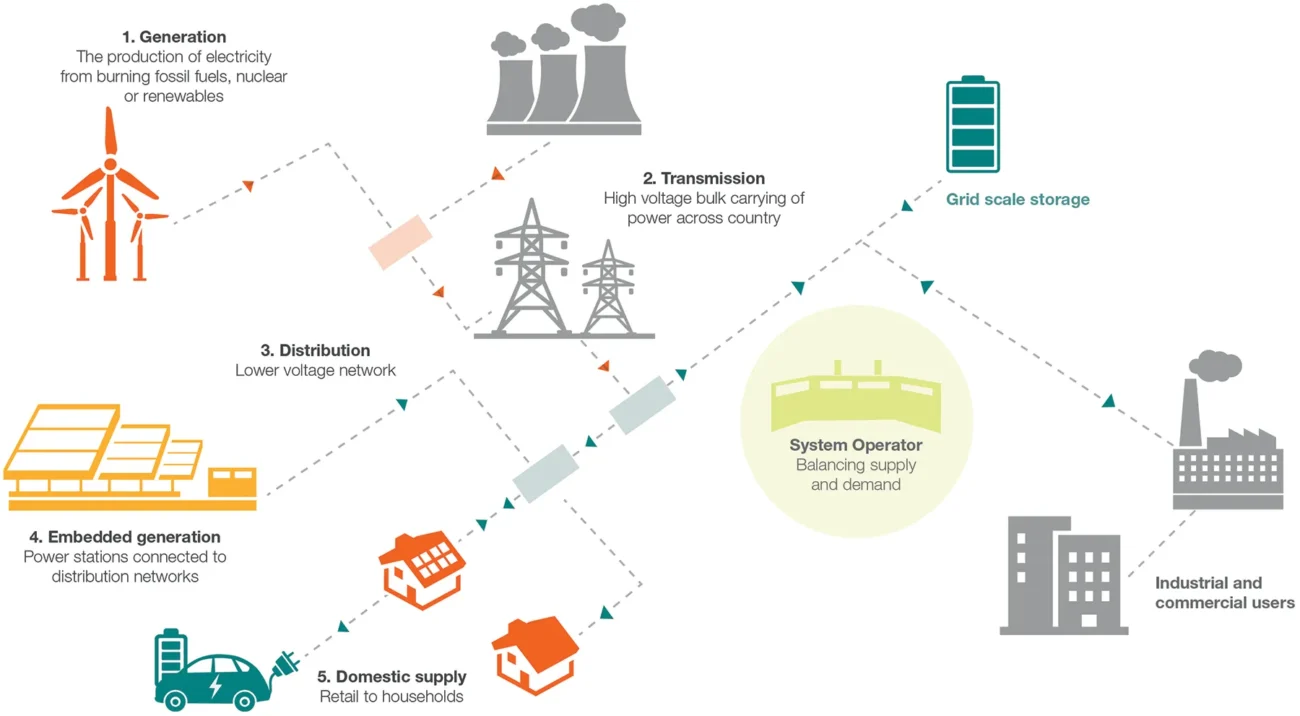
However, in many contexts, “the electrical industry” broadly might encompass both the equipment makers and the power providers. A common umbrella term used is “electrical and electronics industry,” indicating that electrical and electronic companies often are considered together as a larger industrial category, given their historical and technical links.
If someone is asking “what industry is electrical under,” they might be trying to differentiate between the electrical industry and the electronics industry. The electrical industry (equipment manufacturing) is usually classified under industrial manufacturing of electrical equipment. For instance, companies that make circuit breakers, heavy-duty batteries, or electric generators would be in that category. It’s often distinct from the electronics manufacturing category, though the lines blur (because many big companies, like Siemens or GE, work in both electrical and electronic domains).
In summary, the electrical industry falls under the manufacturing sector (for equipment) and under the energy/utilities sector (for power generation/distribution). It’s a sibling to the electronics industry – both are part of the broader electrotechnical field – but when categorized, electrical is usually grouped with heavy industrial manufacturing or energy, whereas electronics is grouped with high-tech manufacturing.
What is the electric industry called?
The “electric industry” can be a slightly ambiguous term, but it usually refers to the electric power industry, i.e. the sector that produces and delivers electricity. In common terms, this is simply called the Power Industry or the Electrical Utilities Industry. It involves power plants (coal, gas, nuclear, hydro, solar, etc.), the transmission grids, and distribution networks that bring electricity to homes and businesses. So, if we’re speaking about the industry that deals with electricity as a commodity, the electric industry is called the Electric Power Industry.
On the other hand, sometimes people might use “electric industry” to mean the electrical equipment industry – the manufacturing of electrical devices. In that case, it’s often just called the Electrical Industry or Electrical Manufacturing Industry. This would include making things like wiring, circuit breakers, electric motors, lighting products, and so forth.

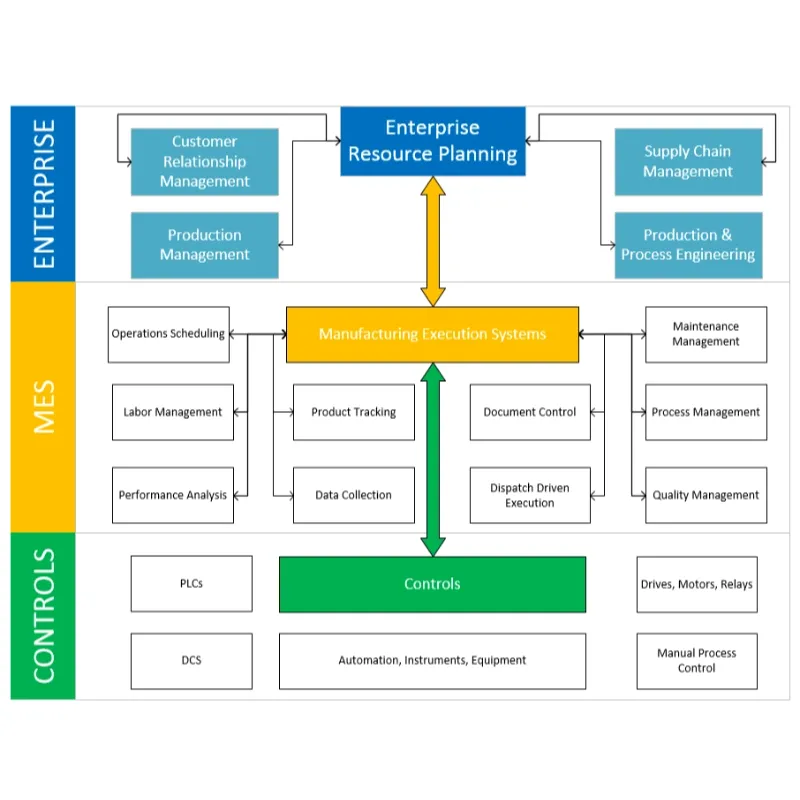
To avoid confusion, let’s distinguish:
- Electric Power Industry: often just referred to as “the power industry” or “electric utility sector.” This is what keeps your lights on – utilities and grid operators.
- Electrical Equipment Industry: often just part of manufacturing, sometimes called “electrical industry” informally. This is what produces the components and hardware for using electricity (like appliances, industrial electrical systems, etc.).
In everyday conversation, when someone says “the electric industry,” they likely mean the power/utility sector unless they specify otherwise. So the industry is called the electric power industry, comprising utility companies and supporting organizations.
Thus, the answer: the electric industry, in terms of power, is called the electric power industry (or simply the power industry). In terms of manufacturing, it’s called the electrical equipment industry. Both are related to “electrical” things, and often just shortened to “electrical industry.”
What occupation does electrical fall under?
When we refer to “electrical” in terms of occupation, we usually are talking about jobs and professions in the electrical trade or electrical engineering field. The question “what occupation does electrical fall under?” is a bit broad, but here are two interpretations:
- Skilled Trades: If someone says “I work in electrical,” they often mean they are an electrician or work in the electrical trades. Electricians, electrical linemen, and electrical technicians are occupations that fall under the construction and trades sector (specifically the skilled trades focused on electrical systems). These are the people who install wiring in buildings, maintain electrical infrastructure, or repair electrical equipment. So in that sense, the occupation “electrical” falls under skilled trade occupations (with a focus on construction/maintenance, often requiring vocational training and licensing).
- Engineering/Technical Professions: “Electrical” can also refer to electrical engineering. Electrical engineers and related technologists are professionals that design and develop electrical systems and equipment. This occupation falls under the engineering sector. Electrical engineers typically work in industries like power generation, electronics manufacturing, automotive (designing electrical systems in cars), etc. Within corporate or industrial job classification, electrical engineering roles are considered part of the STEM (Science, Technology, Engineering, and Mathematics) professions.
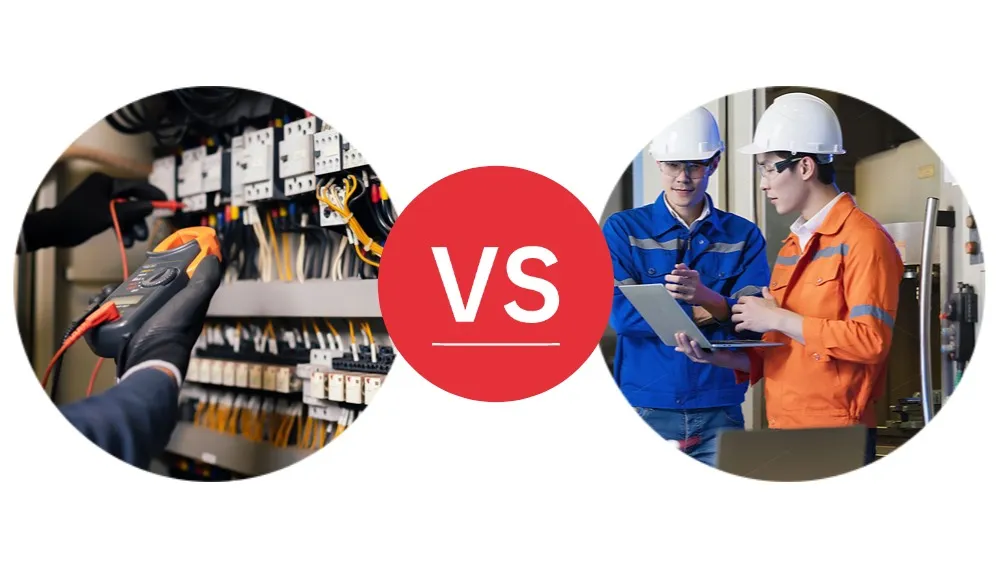
Additionally, within large organizations you might have an “Electrical Department” (especially in manufacturing plants or facilities management) – jobs there could be maintenance engineers or technicians focusing on electrical machinery. Those would align with either the technical trade side or engineering side depending on skill level.
So, electrical occupations broadly fall under either construction/maintenance trades (for electricians, linemen, etc.) or engineering/technical fields (for electrical engineers and designers). Both types are part of the wider electrical industry, but one is more hands-on installation and maintenance, and the other is about design and innovation.
To give a direct answer: an occupation in “electrical” usually falls under the electrical trade or engineering category. For example, an electrician is classified as a construction trade worker, while an electrical engineer is classified as a professional engineer in the tech/engineering sector. Both deal with electrical systems, just in different capacities.
What is the electrical and electronic sector?
The electrical and electronic sector is a term that combines both the electrical industry and the electronic industry into one umbrella. Often, industries are combined this way because of the overlapping skill sets and supply chains. This sector covers everything from heavy electrical equipment (like transformers, generators) to electronic devices (like semiconductors, computers, gadgets). It’s essentially the entirety of industries that deal with electrical technology, whether it’s high-power or low-power, analog or digital.
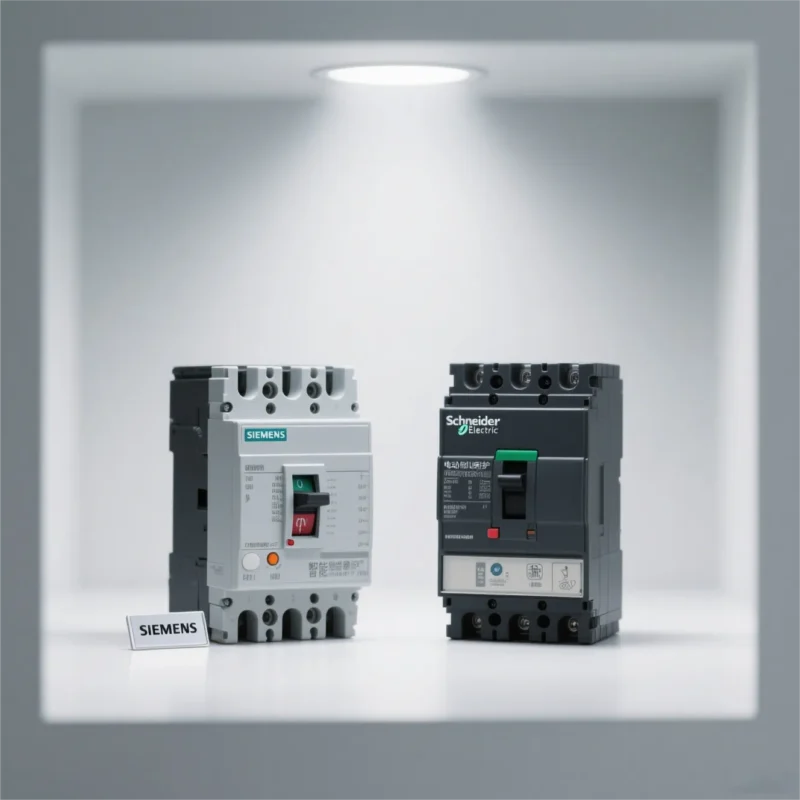
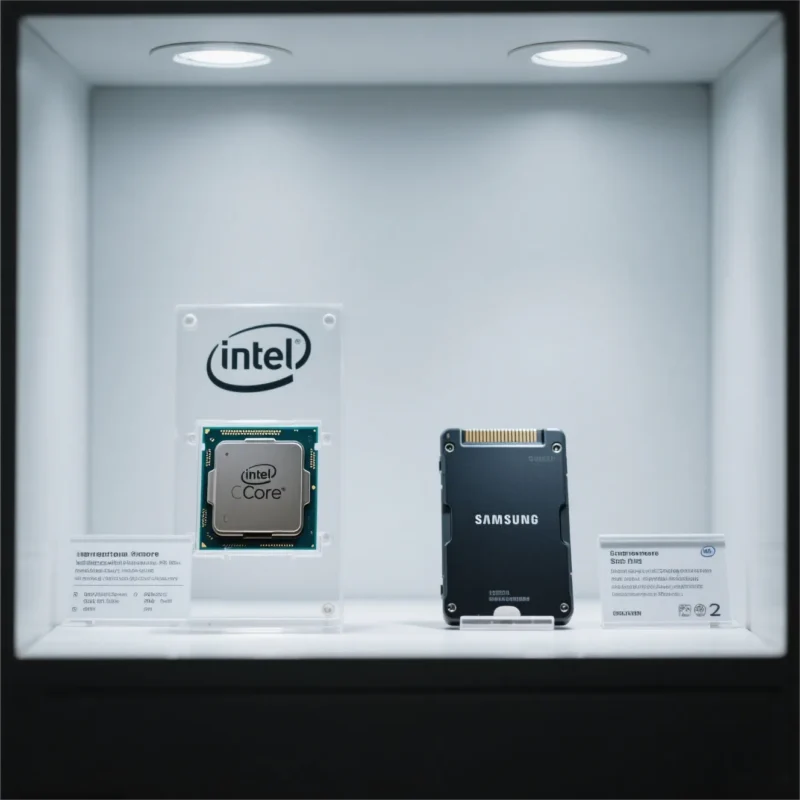
For example, many countries have industry associations or government categories named “Electrical and Electronics” or “E&E sector.” This typically means all businesses involved in making electrical/electronic products. In practical terms, it includes:
- Electrical sector: companies making things like power generation equipment, electrical wiring devices, appliances, etc.
- Electronic sector: companies making semiconductors, consumer electronics, telecommunications equipment, computers, etc.
The reason they’re often lumped together as one sector is historical and educational: electrical engineering is the broader field that originally covered power and circuits, and as electronics (miniaturized circuits, semiconductors) emerged, it became a sub-field. Many universities have combined Electrical & Electronic Engineering departments for this reason. Similarly, in industry, an electronics firm and an electrical equipment firm both employ similar fundamental expertise (circuitry, electromagnetism) even if one is building a microprocessor and the other a power transformer.
So the electrical and electronic sector refers to the combined industry sector encompassing all electrical engineering-based industries. It is a wide-ranging sector, often a country’s most important manufacturing category. For instance, it’s common to read that a certain country’s economy relies heavily on the electrical and electronics sector – meaning they produce a lot of electrical goods (like appliances or industrial electrical systems) and electronic goods (like chips, computers, phones).
In summary, the electrical and electronic sector is the combined arena of all industries producing electrical and electronic goods. It highlights the full spectrum of products from a simple lightbulb to a complex supercomputer, all of which fall under this sector’s umbrella.
What is the electrotechnical industry?
The electrotechnical industry is essentially another term that captures both electrical and electronic industries, focusing on the technical and engineering aspect of anything powered by electricity. In many European contexts especially, “electrotechnical industry” is used to denote companies and activities in electrical engineering and electronics engineering. It is, in effect, synonymous with the electrical and electronics industry described above.
To define it: the electrotechnical industry covers the development and manufacturing of electrical and electronic equipment, ranging from generation and distribution equipment for electricity to consumer electronics and components. It’s a part of the manufacturing sector and is considered a high-tech industry because it provides the components and systems that other industries rely on. In fact, it is often described as a key industry that supports many other sectors – because without electrotechnical products, modern transportation, communication, healthcare, etc., would not function.
The word “electrotechnical” really just emphasizes the technical aspect of electrical engineering. So think of things like:
Power transformers, switchgear (technical electrical products)
Industrial control systems, automation equipment
Telecommunications hardware, radar systems
Scientific instruments, etc.
These all fall under electrotechnical industry.
In some contexts, you’ll see organizations like the International Electrotechnical Commission (IEC), which standardizes things in this industry globally. The existence of such bodies underlines how broad and crucial the electrotechnical industry is – it spans from heavy-duty electrical infrastructure to delicate electronic components.
So, to answer plainly: The electrotechnical industry is the industry of electrical and electronic technology – essentially the manufacturing and tech sector for all electrical equipment and electronic devices. It’s called “electrotechnical” to highlight the engineering/technical side of electrical/electronic manufacturing. If you’re working in anything from building power transformers to designing microchips, you are part of the electrotechnical industry. And as mentioned, it’s a cornerstone industry that powers (literally and figuratively) other industries by providing essential technological infrastructure.
What is the difference between electrical and electronic components?
This is a classic question in the tech world. While the terms “electrical” and “electronic” are related and often used interchangeably by laypeople, there is a technical difference between electrical components and electronic components:
- Electrical components are devices that use or control electricity mainly to do work (often converting electrical energy into other forms of energy like heat, light, or motion). They typically handle higher currents/voltages and don’t necessarily process information. Examples of electrical components include fuses, switches, relays, motors, light bulbs, transformers, and wires. These are often relatively simple devices – for instance, a light bulb simply converts electrical energy to light and heat; a motor converts it to mechanical rotation. In doing so, electrical components follow the basic laws of electricity but do not perform complex decision-making or signal processing. Generally, electrical components are part of systems like power distribution or simple electrical circuits (think of your home’s wiring: breakers, switches, etc. are electrical devices).
- Electronic components are devices that control the flow of electrons (electricity) in order to process information or execute precise functions. They usually operate at lower currents and voltages and can amplify signals, compute data, or control other devices. Examples of electronic components are transistors, diodes, integrated circuits (microchips), sensors, and logic gates. These components form complex circuits that can perform tasks like computation (in a computer), signal modulation (in a radio), or digital control (in a smartphone). In short, electronic components manipulate electrical energy in more subtle ways to handle information – for example, a microchip in your phone processes data, which is a very different job than a simple electrical toaster wire that just heats up.
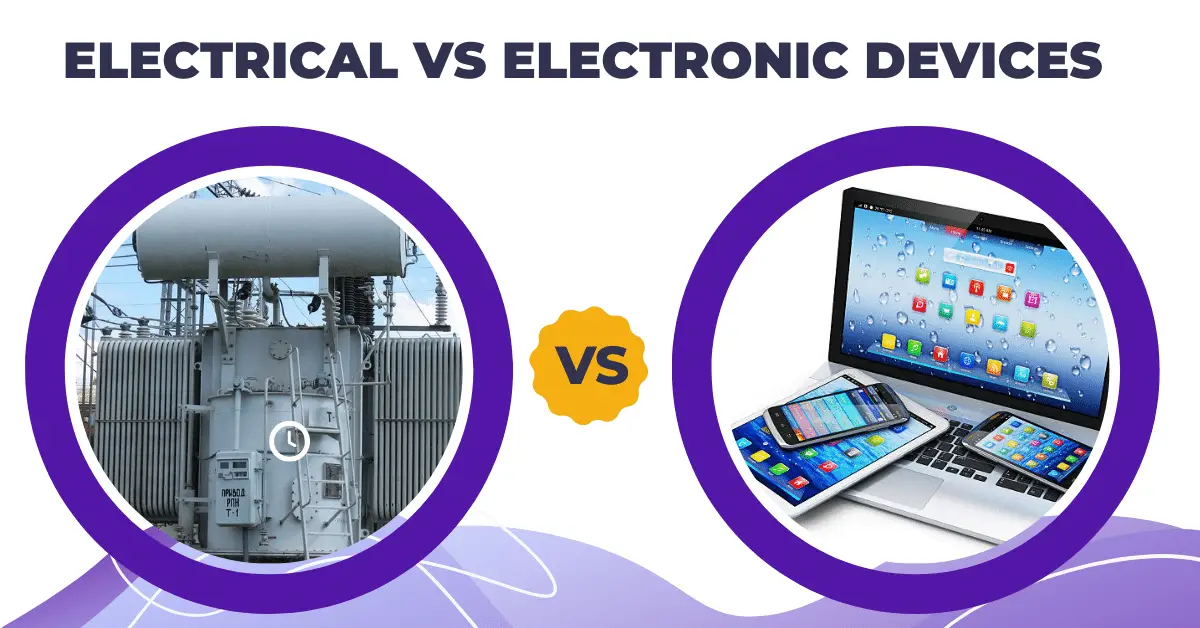
One easy way to remember the difference: electrical devices convert electrical energy into other forms of energy (heat, light, motion) or carry power from one place to another, whereas electronic devices manipulate electrical energy to make something intelligent happen (like decisions, amplifying a music signal, computing numbers, etc.). For instance, an electric toaster and a radio both use electricity. The toaster’s wires just heat up (that’s electrical). The radio’s circuits (with transistors, etc.) are interpreting radio waves and producing sound – that’s electronic.
Another difference is in the scale and complexity: electrical components tend to be larger (think of big transformers or motors) and built to handle high power, while electronic components are often tiny (microchips on a circuit board) and handle very low power but with high precision. There’s also a difference in materials: electronic components often use semiconductors (like silicon in chips), whereas electrical ones use conductors and insulators designed for high currents (copper windings in motors, etc.).
In practical usage, the line can blur (for example, is an LED light “electrical” or “electronic”? It uses a semiconductor and emits light, arguably an electronic component that behaves like an electrical light source). But the above guidelines hold in most cases.
So, to sum up: electrical components deal with the raw power of electricity (often for power/energy purposes), and electronic components deal with controlling and using electricity to process information or achieve specific controlled functions. Both are essential, and indeed they often work together (an electronic control circuit might trigger an electrical motor, for instance). Understanding this distinction is important especially in engineering, because it guides how we design circuits and what kinds of parts we choose for a project.
The Role of RF Components in the Electronic Components Industry
As highlighted earlier, RF (radio frequency) components form an important niche in the electronic components industry, bridging the gap between electrical power and electronic information. RF components, such as antennas, RF connectors, and adapter cables, are responsible for handling high-frequency signals (like those used in Wi-Fi, cellular networks, radar, etc.). With the expansion of wireless communication – think 5G networks, satellite communications, IoT sensors, and radar systems – RF components have become increasingly vital.
One key aspect of RF components is the RF adapter cable. These cables and their associated connectors allow different pieces of equipment to connect and transmit radio signals with minimal loss. For example, you might need to connect a device with an SMA connector to another with a BNC connector; an RF adapter cable can link them. The quality of these components affects signal strength and clarity, which is crucial in applications from high-speed mobile data to military communication systems.

QMA connectors are designed for RF signal applications, offering quick connect and disconnect features. This image presents QMA connectors, crucial in ensuring robust connections for high-frequency RF communication systems.

SMA connectors are commonly used in RF systems for high-frequency signal transmission. This image shows SMA connectors, vital in wireless communication systems, satellite communications, and radar technologies.
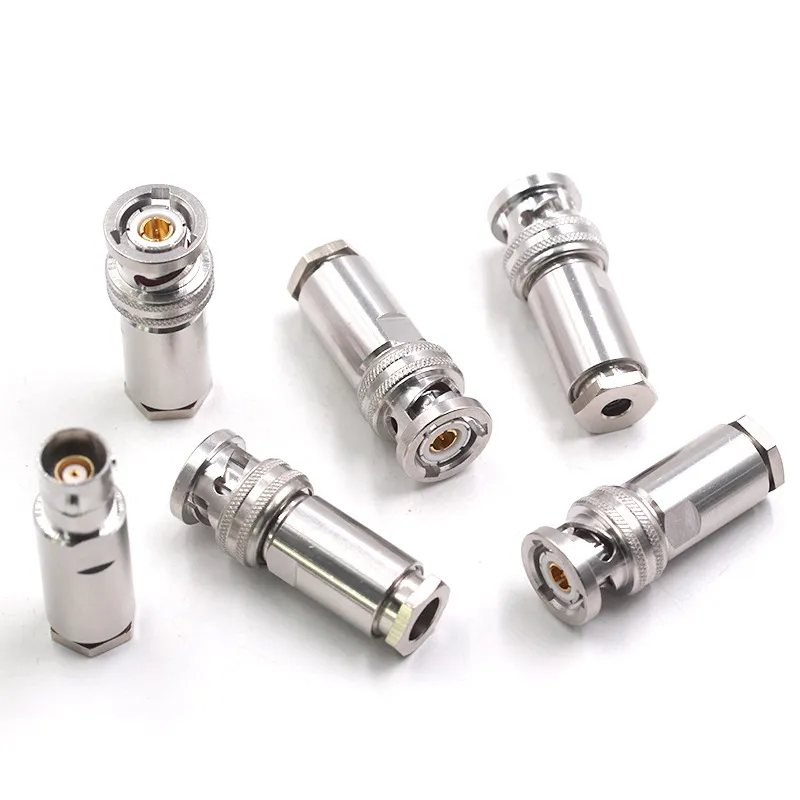
BNC connectors are widely used in RF communication systems due to their reliability and ease of use. This image showcases male and female BNC connectors, essential for secure and high-frequency signal transmission in various applications.
Common RF connectors used in the electronic components industry (from left to right): a male BNC connector, a female N-type connector, a male N-type plug, and a male SMA connector. These coaxial connectors come in different sizes but all serve the purpose of carrying high-frequency signals. Such connectors and their adapter cables are essential in wireless communications, ensuring that various devices and antennas can be linked together. Companies like TEJTE specialize in producing a wide range of these RF adapters and cables to support global communications infrastructure.
The RF segment exemplifies how specialized the electronic components industry can be. While a general electronics manufacturer might produce a bit of everything, many companies focus on excelling in one niche. TEJTE, for instance, has carved out expertise in RF adapters and related components. According to the company’s profile, TEJTE offers over 50 interface configurations of RF adapters (covering standards like SMA, BNC, QMA, etc.) and provides custom OEM/ODM solutions for clients in communication systems. This means that if an industry client needs a custom cable assembly to connect, say, a new type of antenna to a device, companies like TEJTE can design and manufacture that part to spec. The fact that TEJTE is ISO 9001-certified also highlights the quality control needed in this segment – RF signals are sensitive, and even small imperfections in connectors or cables can degrade performance, so manufacturing standards are high.
In the bigger picture, RF components are a bridge between the electronic realm and the electrical (power) realm. They carry analog electrical signals at radio frequencies, which encode information (making them part of electronics), but they also must deal with power transfer (a strong RF signal carries significant energy, like in a transmitter, which is an electrical consideration). Thus, RF component makers need knowledge of both electronics (signal integrity, impedance, frequency behavior) and electrical engineering (materials, power handling).
The growth of the electronic components industry includes strong outlook for RF components as well – the “electronic components industry outlook” would note trends such as increasing demand for high-frequency connectors, higher bandwidth cables, and materials that can support millimeter-wave frequencies (as used in advanced 5G and radar). There’s also a geographical component; for instance, there’s rising interest in local suppliers and distributors for RF components in various regions (you even see searches like “electronic components distributor in Pakistan”, indicating that around the world, companies seek reliable sources for specialized components). This global demand is pushing RF component manufacturers to scale up and innovate continuously.
In conclusion of this RF spotlight: the electronic components industry isn’t just about mass-produced chips and capacitors; it’s also about these critical specialty components that ensure our devices can connect with each other. RF adapters and connectors may seem like small, simple parts, but they play an outsized role in enabling technologies such as mobile internet and satellite GPS. The presence of dedicated companies in this space underscores the diversity of the industry. Whether it’s a giant semiconductor fab churning out billions of transistors or a focused firm like TEJTE making precision RF cables, together they form the ecosystem of the electronic components industry that keeps our world running.
Conclusion
The electronic components industry is a vast and multifaceted domain – the unsung hero of the tech world. It provides the pieces that, when assembled, become the smartphones, computers, vehicles, and infrastructure that define modern life. We’ve seen that this industry spans everything from basic passive components to cutting-edge microchips, and includes specialized niches like RF components critical for communications. It’s tightly interwoven with the broader electronics industry (which produces final goods) and stands alongside the electrical industry (focused on power and heavy equipment) as a key part of the electrotechnical sector.
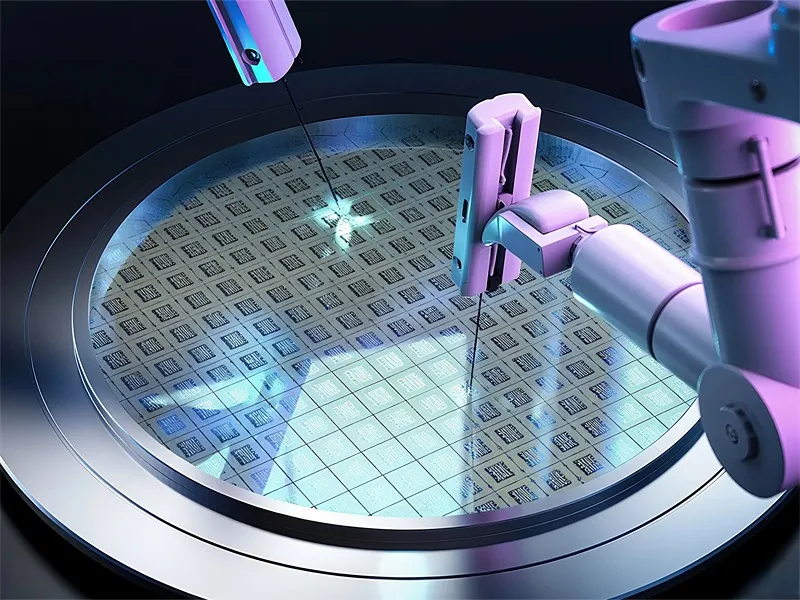
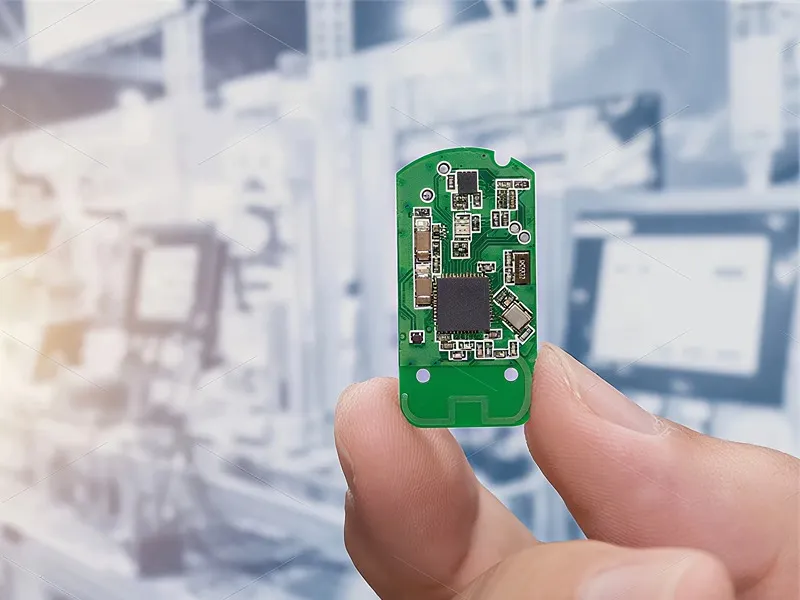
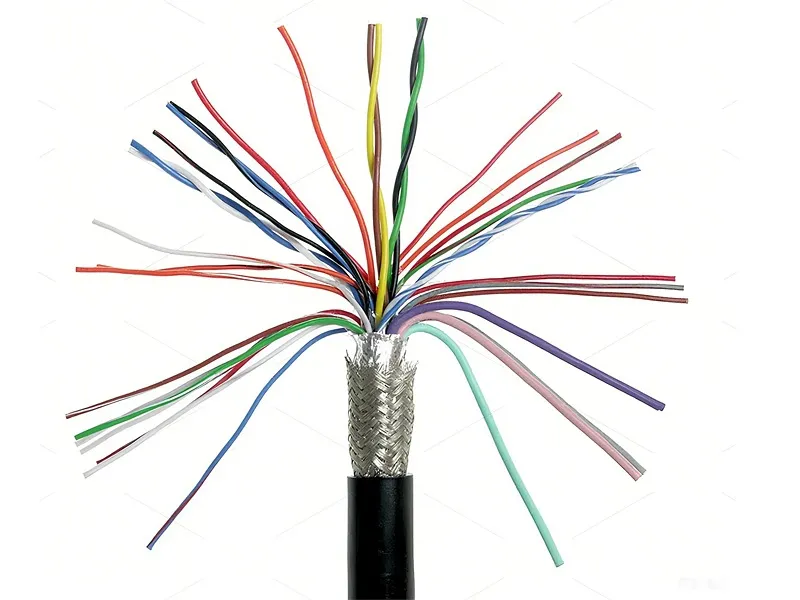

RF adapter cables are used to connect different RF connectors in communication systems. This image showcases an RF adapter cable, which plays a crucial role in linking various devices, ensuring efficient signal transmission in wireless systems such as Wi-Fi, cellular networks, and radar.
In this guide, we answered fundamental questions: we defined what the electronic components industry is, identified how it’s categorized and related to other industries, gauged its enormous market size and positive outlook, and clarified terminology distinctions like electrical vs. electronic. The electronic components industry outlook is bright – with continuous growth driven by innovation and a seemingly insatiable global appetite for more electronic functionality in every aspect of life. It’s an industry typically considered part of high-tech manufacturing, yet one could also simply consider it the backbone of the digital age.
For businesses, engineers, or enthusiasts, understanding this industry is important. It reminds us that behind every flashy consumer product, there’s a complex supply chain of resistors, chips, cables, and connectors making it all possible. And for anyone looking into careers, it’s clear that occupations in this realm range from electrical trades to electronic engineering – all contributing to the greater whole.
Ultimately, recognizing the role of the electronic components industry gives us a greater appreciation for how our devices work and how various industries connect. Next time you use your phone or turn on a device, remember that an entire global industry of component makers and suppliers worked behind the scenes to bring that experience to you. From the smallest microchip to the humble RF cable, each component is a tiny hero in the story of technology.
Bonfon Office Building, Longgang District, Shenzhen City, Guangdong Province, China

A China-based OEM/ODM RF communications supplier
- Customized RF Adapter Cable
- Custom RF Connectors
- Custom RF Adapter
- Custom Millimeter Wave Test Adapter
- Custom RF Antennas
- Custom RF Coaxial Cables
- Custom RF Coaxial Power Splitter
- Custom RF Coaxial Load
- Custom Electronic Module
- Custom Connectors
- Custom Push Button Switch
- Custom Capacitors
- More New Products
Table of Contents
Owning your OEM/ODM/Private Label for Electronic Devices andComponents is now easier than ever.
